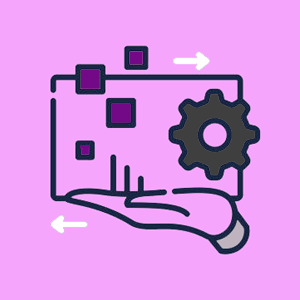 The volume of digital assets being created and consumed is staggering. From images and videos to documents and marketing collateral, organizations are faced with the formidable task of managing these assets efficiently. This is where a Cutting-Edge Digital Asset Management (DAM) system comes into play. A well-designed DAM system is not just a luxury but an essential tool for businesses that rely on digital content. This article delves into the requirements for a Cutting-Edge DAM system, exploring what it looks like, what is needed to build it, and why it is crucial for modern organizations.
The volume of digital assets being created and consumed is staggering. From images and videos to documents and marketing collateral, organizations are faced with the formidable task of managing these assets efficiently. This is where a Cutting-Edge Digital Asset Management (DAM) system comes into play. A well-designed DAM system is not just a luxury but an essential tool for businesses that rely on digital content. This article delves into the requirements for a Cutting-Edge DAM system, exploring what it looks like, what is needed to build it, and why it is crucial for modern organizations.
What is a Cutting-Edge Digital Asset Management System?
A Cutting-Edge DAM system is more than just a repository for digital files. It is a sophisticated software solution designed to organize, store, retrieve, and distribute digital assets effectively. Such a system goes beyond basic file management, offering advanced features and capabilities that enable organizations to harness the full potential of their digital content.
Requirements for a Cutting-Edge DAM System
- Scalability: A Cutting-Edge DAM system must be scalable to accommodate the ever-expanding volume of digital assets. It should seamlessly adapt to an organization’s growing needs, whether it’s managing thousands or millions of files. Scalability ensures long-term viability and cost-effectiveness.
- Intuitive User Interface: An intuitive and user-friendly interface is paramount. Users, ranging from marketing teams to content creators, should be able to navigate the DAM system with ease. Advanced search functionality, metadata tagging, and customizable dashboards enhance usability.
- Robust Metadata Management: Metadata is the backbone of a DAM system. A Cutting-Edge DAM system should allow for the creation, customization, and management of metadata fields. This metadata should be easily searchable, making asset retrieval quick and efficient.
- Version Control: Version control is vital for tracking changes and maintaining the integrity of digital assets. The DAM system should support versioning, enabling users to access and revert to previous versions if needed.
- Security and Access Control: Protecting digital assets is critical. A Cutting-Edge DAM system should offer robust security features, including role-based access control, encryption, and audit trails. It ensures that sensitive assets are safeguarded from unauthorized access or tampering.
- Integration Capabilities: Seamless integration with other software and tools is essential. Whether it’s content management systems, marketing automation platforms, or creative software, the DAM system should connect with the organization’s existing tech stack to streamline workflows.
- Advanced Search and Metadata AI: Leveraging artificial intelligence and machine learning for content analysis and tagging can greatly enhance asset discoverability. AI-driven image recognition and natural language processing can automatically tag assets, saving time and improving search accuracy.
- Workflow Automation: A Cutting-Edge DAM system should facilitate workflow automation, allowing for the creation of custom processes. This includes automated asset approvals, notifications, and distribution, reducing manual intervention and speeding up content production.
- Multi-Format Support: Digital assets come in various formats, from images and videos to documents and 3D models. The DAM system should support a wide range of file formats and provide tools for converting, transcoding, and rendering assets for different use cases.
- Performance and Speed: Quick access to digital assets is essential for productivity. A Cutting-Edge DAM system must have high performance and low latency, ensuring that users can retrieve assets swiftly, regardless of their location.
Why a Cutting-Edge DAM System is Important
- Enhanced Efficiency: With efficient asset organization, quick retrieval, and automated workflows, organizations can significantly enhance their operational efficiency. Teams can focus on creating and delivering content instead of wasting time searching for files or managing versions manually.
- Consistency and Brand Compliance: DAM systems ensure that all digital assets adhere to brand guidelines and compliance requirements. This consistency is crucial for maintaining a strong brand image and legal compliance.
- Cost Reduction: By eliminating duplicate asset creation, reducing storage costs, and streamlining workflows, a Cutting-Edge DAM system can lead to cost savings in the long run.
- Increased Productivity: Employees spend less time searching for files and more time on productive tasks. Collaboration and content creation become more efficient, ultimately leading to increased productivity.
- Better Decision-Making: A well-organized DAM system provides data and insights into asset usage, helping organizations make data-driven decisions regarding content creation and distribution.
- Scalability and Future-Proofing: As organizations grow and their digital asset libraries expand, a Cutting-Edge DAM system ensures they can scale seamlessly without disruptions.
Conclusion
In an era where digital content reigns supreme, a Cutting-Edge Digital Asset Management system is not just a luxury but a necessity. It empowers organizations to manage, utilize, and leverage their digital assets efficiently, resulting in improved efficiency, cost savings, and better decision-making. By meeting the requirements outlined in this article, organizations can embark on a journey to harness the full potential of their digital content, staying competitive in an increasingly digital world.
